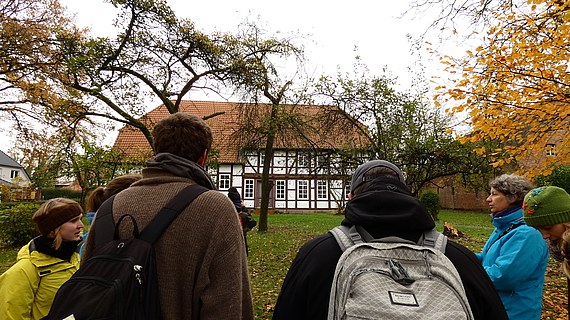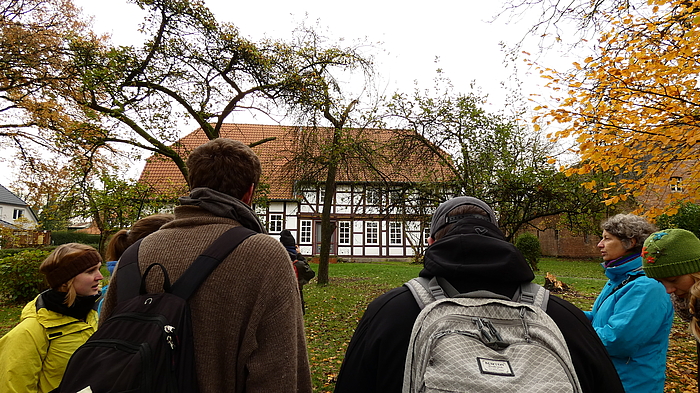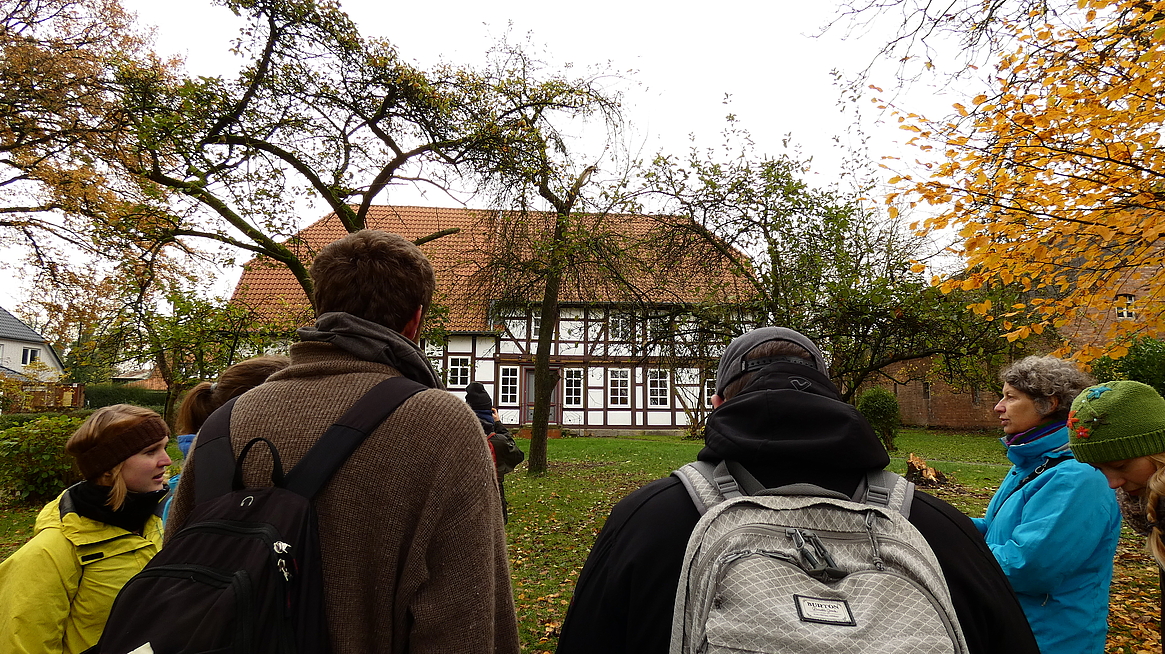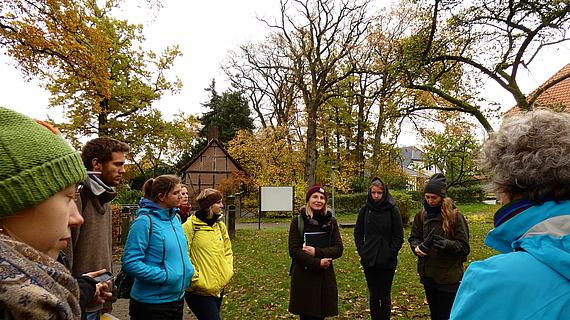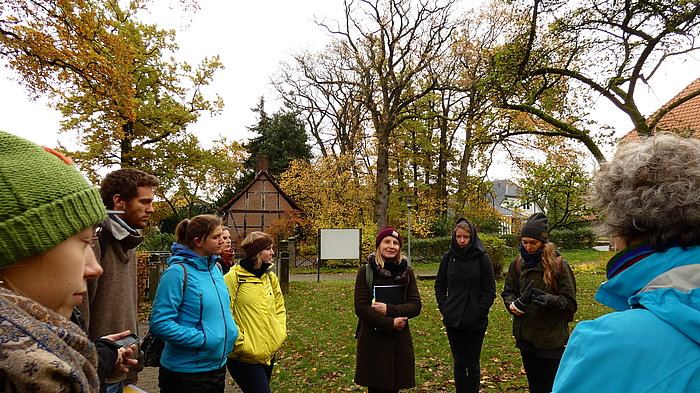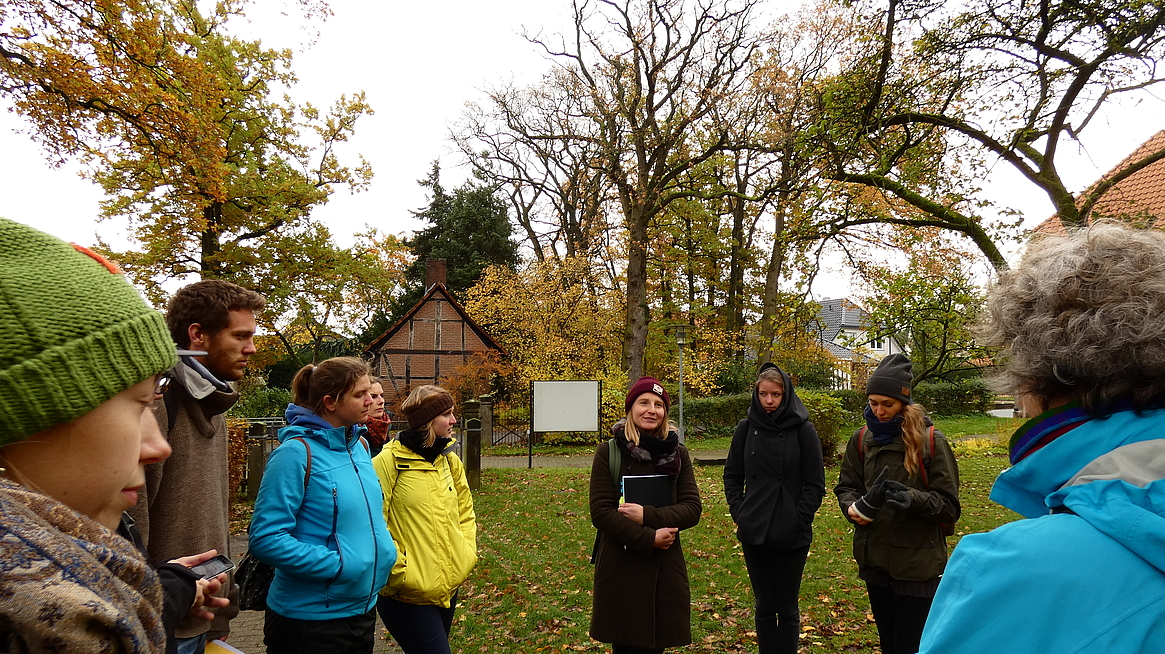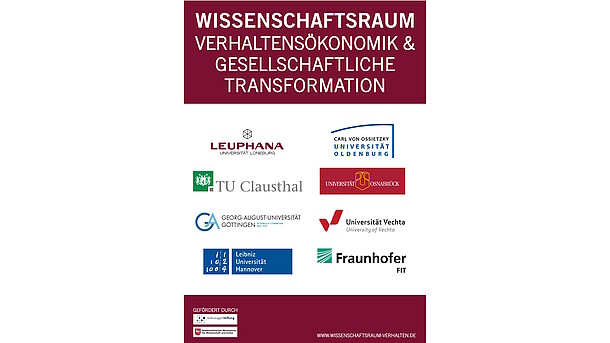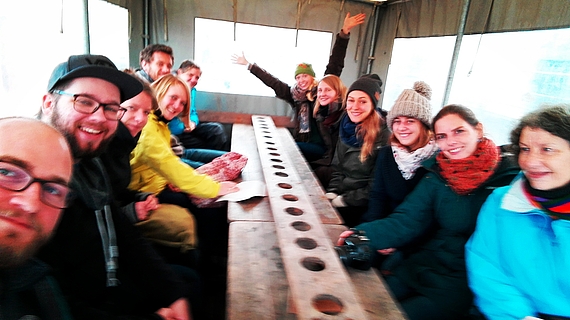
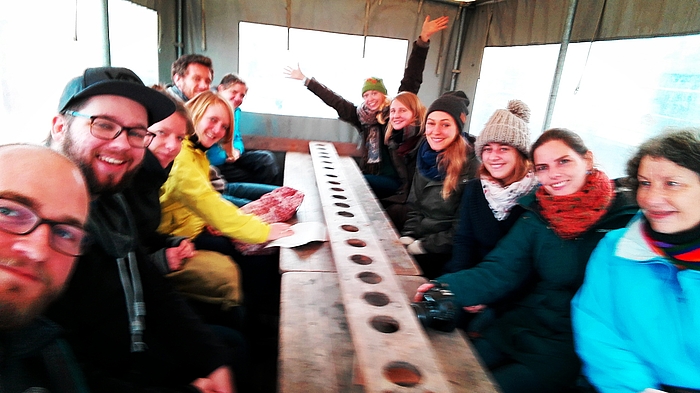
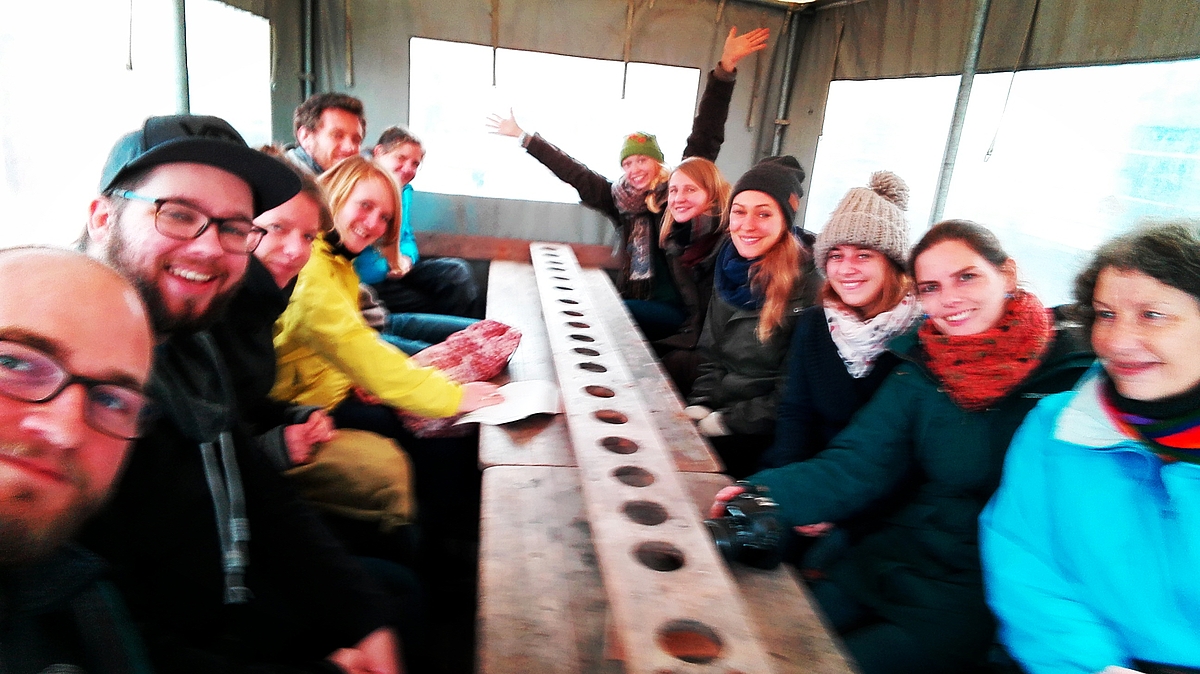
LASKO, the national conference of landscape students from Germany, Austria and Switzerland, took place in Hanover from 13 to 17 November 2017. The Institute for Environmental Planning also offered suitable offerings on the framework theme "Planable?! Planners as activists - activists as planners".
Thus, on 15 November, a group of 12 students travelled to the Börde village of Hohenhameln-Harber, which is characterised by a particularly active village community. Dr Roswitha Kirsch-Stracke illustrated to the student guests how first-year students in Hanover start their projects, how the eye for the uniqueness of a place is trained and how the first own mappings are tackled by means of a study work carried out here. Elena Rautland then presented the results of her Master's thesis. The graduate had dealt with vacancies in the village, prepared a potential and needs analysis and conducted a village workshop with local citizens for this purpose. Anja Böttcher from the Office for Regional Development Leine-Weser spoke about funding opportunities in village development - as a Harber citizen, she was able to report as both an expert and a person affected. The mayor of the village, Hans Georg Böttcher, gave information about the impulses that had come from the successful participation in the competition "Our Village has a Future". The students' questions about the necessities and opportunities of village development could thus be examined from different perspectives. In the evening, the covered wagon took them back to Algermissen railway station and from there back to Hanover.
